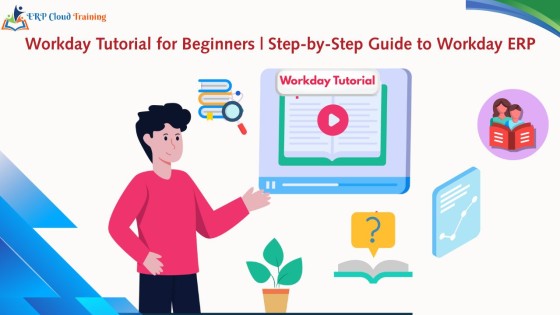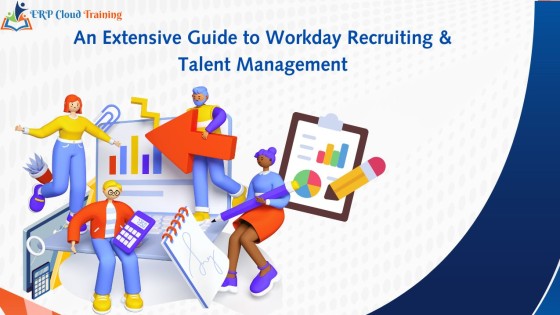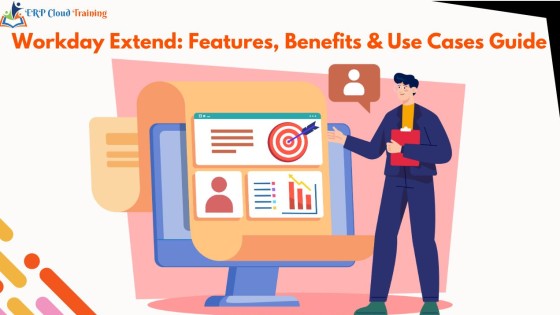PeopleSoft vs. Workday: Comparing Architecture, Features, and Benefits

In this blog, you will be exposed to the Architecture and Benefits of Workday and PeopleSoft and you will learn the difference between them.
Oracle's aggressive acquisition of PeopleSoft
David Duffield and Ken Morris established PeopleSoft, Inc. in 1987. It specializes in creating enterprise-level solutions for human resource management, financial management, supply chain management, customer relationship management (CRM), corporate performance management, and manufacturing. PeopleSoft has expanded over the years to include industry-specific solutions and those catering to more general corporate needs like materials management. PeopleSoft merged with a competitor named JD Edwards in 2003. It was an independent company until Oracle acquired it in a contentious deal in 2005.
PeopleSoft was built on a client-server paradigm with a dedicated client before being acquired by Oracle. A business's operations may be managed and run on a web browser thanks to the web-centric architectural foundation of the latest iteration of PeopleSoft. PeopleSoft solutions, which Oracle has rebranded, are designed to meet the most demanding needs of any enterprise. You may use PeopleSoft as a complete enterprise resource planning solution or pick and choose the elements you desire.
How was Workday born?
Due to PeopleSoft's hostile acquisition by Oracle in 2005, former CEO David Duffield and chief strategist Aneel Bhusri established a new company called Workday. Workday Human Capital Management (HCM) was the company's first-ever product, launched in 2006. Workday Financial Management, its financial suite, was released the following year. Initially, Workday focused on the human capital management (HCM) side of the business. Still, as time passed, the company added features like talent management, a learning management system, benefits, payroll, recruiting, budgeting, planning, and analytics to make its Financial Software more competitive with other ERP systems.
Workday, an early adopter of the SaaS model for corporate software, offers its services through subscriptions rather than an outright product purchase. Its cloud-based human capital management (HCM) and financial application have won several awards for their user-friendliness and speed of deployment. Workday is a pioneering company and thought leader in its industry.
Architecture
In the debate of Workday Vs Peoplesoft in terms of architecture, PeopleSoft and Workday were designed and are being developed in very different ways. From the start, Workday was conceived and executed as a service that ran entirely on the cloud. It offers a unified platform that draws from a centralized data repository and employs a standard security framework for all features. On the other hand, PeopleSoft was created using technologies that evolved separately from each other.
PeopleSoft Architecture
The PeopleSoft software architecture is made up of a few crucial components, each of which is responsible for ensuring its efficient functioning. These vital components work together to transmit and receive the information and data necessary to run a business. PeopleTools, such as PeopleSoft Application Designer and PeopleSoft Data Mover Tool, are connected directly to the database on the PeopleSoft Application server. PeopleTools is the suite of over 400 programs and technologies used in the development, deployment, and maintenance of all PeopleSoft applications.
Workday Architecture
Workday's architecture has changed significantly over the years. Yet, it has retained its original design principles that guarantee the architecture can accommodate future changes and adapt to the ever-evolving nature of technology, the expanding needs of the consumer base, and the changing landscape of applicable laws. Workday's user interface is built using HTML and a collection of JavaScript widgets. In addition to the API Gateway, other services like Integration, Deployment, Operations, and Analytics keep everything in sync.
These guiding principles have helped it regularly update its products, attract new customers, and adopt cutting-edge tech that improves the customer experience while not compromising its software or other services. While most software still run on antiquated platforms that can't keep up with modern demands, Workday's design reflects modern enterprises' transactional and analytic needs, with state-of-the-art methods and accessible tools. PeopleSoft technologies are outdated (COBOLs are still around, especially in HCM) and present challenges in supporting them.
The differences between PeopleSoft and Workday appear to be substantial in releasing and updating software.
While arguing about Workday Vs Peoplesoft the differences between them appear to be more substantial through recent updates. Oracle, which previously only offered PeopleSoft's solutions through on-premise deployment, has recently adopted the cloud-based strategy. Cloud PeopleSoft is only available for on-premises and private cloud implementation, both of which need an additional fee.
Due to the workflow's selective adoption strategy, PeopleSoft's update cycle takes many weeks. Software updates are released regularly; however, this does not occur automatically. Administrators must first choose the updates they want to apply and then set a time for them to be installed into their system. This makes it difficult and expensive to replace, upgrade, or completely do away with obsolete technologies.
Workday, unlike PeopleSoft, was designed to work on the cloud from the beginning.
New features and bug fixes are added regularly and released over the cloud without the need for manual intervention from system administrators. Major updates are released twice yearly, while minor ones are released multiple times throughout the year.
Constant innovation and refinement enabled Workday to cut down on downtime. Additionally, due to on-premises solutions like PeopleSoft requiring significantly more IT resources than a cloud-based solution, and software running in a private cloud costing more than those that use a public cloud, Workday is clearly ahead of the game.
Switching from PeopleSoft to Workday these are the benefits that companies realize:
Deployment and updates: The key differentiator between Workday and PeopleSoft is the way they are deployed. Workday is totally designed for cloud deployment, which ensures that every user is constantly on the most recent version. PeopleSoft is also offered in the cloud environment, but it may also be purchased as on-premise software or in the private cloud. PeopleSoft has a selective adoption strategy for updates rather than deploying them as they become available. This implies that new versions of the software are released on a regular basis, but system administrators may pick which updates to download and when to get them.
CRM: Oracle provides PeopleSoft CRM, a set of customer relationship management software. Its CRM may be adjusted to meet different sectors and is deeply linked with the rest of the PeopleSoft platform. On the other hand, there is no CRM application built by Workday. Instead, Workday has partnered with Salesforce which facilitates a smooth integration between Workday’s products and Salesforce CRM.
Analytics & Reporting: Both Workday and PeopleSoft include features for business intelligence. While Workday links to external data sources to provide analytical reports within Workday, PeopleSoft maintains its clients' data on its own proprietary databases. These tools may be used across the system to deliver insights directly into the dashboards, but when external data is added, the feature is upgraded to a business intelligence solution.
Support: While PeopleSoft relies on its IT staff to maintain and apply patches for updates, Workday is a software solution that offers ongoing support to its users by automatically updating mostly twice each year. Workday also has a support community for users to enable them to find solutions themselves through the experience of other users and Workday personnel.
Price: Workday Vs PeopleSoft
Workday and PeopleSoft both offer training courses and certification courses to learn their respective platforms. While Workday doesn’t specify the price, its courses can cost somewhere around 1000-1500 USD. PeopleSoft’s courses are on a bit cheaper side with a range of 800-1500 USD. The major difference between courses offered by both software is that Workday courses are taught only by authorized people at specific locations which include Workday’s partner organizations. PeopleSoft courses on the other hand can be taught by anyone.
Better User Interface: The intuitive, user-friendly, and natural design of the User Interface (UI) is the area where Workday shines. Being built on modern architecture, Workday UI is designed to change with the latest trends and needs of the customers without altering the product's core functionality. These changes do not affect the user’s access or workflow. With its UI, Workday has created a seamless experience across mobile, tablet, and desktop views.
Multiple application consolidation: Workday enables customers to consolidate numerous spreadsheets and data stores. Leaving PeopleSoft has eliminated the need for some companies to have multiple modules.
No need for Extra Hardware: A major perk of Workday's cloud-based architecture is that users don't need to maintain their own IT hardware and applications. There is a drastic reduction in IT personnel required for Workday deployment, management, and update support. Interruptions plague most on-premises programs, but these problems may be avoided by keeping all clients on the same version and quietly delivering updates.
Conclusion
Being designed to be in the cloud from day one has enabled Workday to compete successfully with PeopleSoft and pull their customers away. Being aligned with the latest IT trends and technology and having a faster pace of innovation, Workday is winning new customers due to costing half the expense over five years and eliminating the need for costly software upgrades while offering better functionality. Regarding the future, Workday will continue its momentum in expanding its customer base, while it’s not clear if PeopleSoft will be able to retain its customers.
Embark upon your Workday HCM training today!
ERP Cloud Training offers 40+ Workday training courses. Workday HCM course is designed to equip you with the fundamentals of human capital management and in-depth concepts. The curriculum is extensive, with real-world case studies that provide Workday aspirants with practical value.
Breeze through interviews and begin a promising career in Workday with our 100% placement support and 24/7 access to premium learning resources and expert guidance.
We offer flexible learning options to best suit your requirements. Study at your own pace as we offer both live instructor-led sessions and on-demand video tutorials.
Enroll now to acquire the skills and expertise you need to launch a successful career in Workday with the help of our Workday certification training.
Categories: : Workday Training
Article written by
Mary is a globally recognized ERP and Workday expert, and the founder of ERP Cloud Training, with over 30 years of ERP implementation experience and 17+ years specializing in Workday. As a functional and technical subject matter expert, she was part of the original Workday design team and has led enterprise-wide deployments across 40+ modules, including HCM, Finance, Payroll, Recruiting, and Integrations, in collaboration with top-tier firms such as IBM, Accenture, PwC, KPMG, and Alight.
Mary is also a prolific Workday blog author, dedicated to sharing her decades of hands-on experience through insightful, real-world content. Her writing dives deep into critical and often-overlooked Workday topics—many of which have never been formally taught or published. By translating complex implementation lessons into practical blog content, she enables professionals and learners to gain industry-ready knowledge far beyond textbooks or theoretical guides.
Her passion for writing stems from a desire to pass on her 30+ years of wisdom to the next generation of Workday practitioners. Mary continually upskills herself with the latest Workday innovations and trends, ensuring her blogs reflect the most current, actionable insights in the field. As a featured speaker at Workday conferences, she shares implementation strategies, problem-solving techniques, and emerging best practices drawn directly from global project experience.
Through her blogs, Mary aims to empower professionals worldwide with the depth, clarity, and confidence they need to succeed in real-world Workday roles.
 ERP Cloud Training Online
ERP Cloud Training Online 




